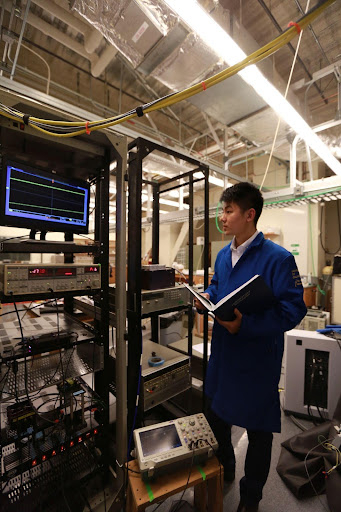
For pharmaceutical companies, countless rounds of experiments have to be conducted over years before bringing new medications to the market. Measuring the effectiveness of chemical molecules is central in those experiments. Accelerating the evaluation of the interaction between drug molecules and disease molecules has therefore always been a priority for medicinal chemists.
"Artificial intelligence can not only generate text content as what ChatGPT is doing but can also help in drug discovery. Our state-of-the-art AI-powered molecule design technology helps medicinal chemists to speed up their experiments and increase the strength of the interaction between the tester and the disease. The stronger the drug molecules bind, the more effective will the medication be in curing the disease," says Xudong Lv, the co-founder of QuanMol Technology. Lv states that the effectiveness of chemical molecules is an important indicator of how well the medication works. The process of optimizing the molecules require extensive quantitative assessments to strengthen or weaken certain molecular properties, or to make changes to their structure. The adjustments that need to be made, require the chemists to conduct countless rounds of experiments, synthesizing molecules, and running tests, accounting for a substantial portion of pharmaceutical R&D.
Lv explains that the service QuanMol offers can be used to greatly improve the efficiency of the chemical interaction compared with experiments that use standard solutions. For example, if an obvious change is noticed after twenty steps of interaction using an existing method, QuanMol can reveal the same phenomena in about four steps by automating the visualization to identify the relevant molecules, vastly reducing the time required to pinpoint the most relevant chemical interactions to achieve the desired outcome.
QuanMol is driving a revolution in pharma industry. Lv explains that two generations of technologies were developed over the past decades, stating: "The 1st generation was ligand-based drug design in which chemists optimized drug molecules without much understanding of the ligand-protein complex. The 2nd generation was structure-based drug design. This only emerged when structure biologists were able to reconstruct precise protein structures from x-ray or Cryo-EM. Chemists can optimize drug molecules based on its docking on certain proteins. With QuanMol, we are introducing the 3rd generation, structure-based drug design. This will empower medicinal chemists to directly compute and effectively visualize protein-ligand interaction. With a fast identification of "weak points" in the molecule structure from our approach, drug discovery process will be accelerated dramatically."
Lv is passionate about how the accuracy of data and machines can improve the efficiency of traditionally time consuming analytical activities. He is an active member of American Physical Society, American Chemical Society, and Association for Computing Machinery. His scholarly research has been presetned at prestigious conferences and in scholarly journals. Lv serves the research community as journal editor and reviewer. He holds a Ph.D. from UC Berkeley, where he specialized in quantum science and invented techniques to enhance detection accuracy of molecular interactions. For example, his technique can be applied to magnetic resonance imaging (MRI) to improve the original signal intensity by about 1000 times and used to enhance cancer detection at a much earlier stage.
Lv is also an accomplished entrepreneur who is skilled in developing world-changing technologies, and his achievements include not only the development of cutting-edge technologies but also the identification of promising enterprises from a venture capital perspective. QuanMol Tech not only shortens the time spent on running costly experiments but also reduces the cost of the experiment to one-fifth or even one-tenth of the original cost. The concept underlying QuanMol Technology is revolutionary and has already created traction in the industry. The company estimates its addressable market size at approximately $100 Billion. It has raised $3 million in its first round of funding and is in active discussions and collaborations with major pharmaceutical companies.









